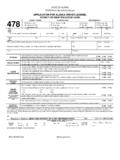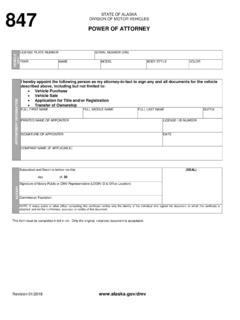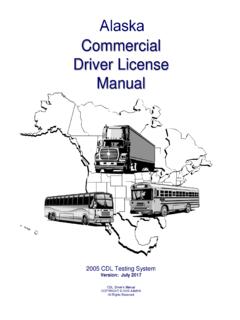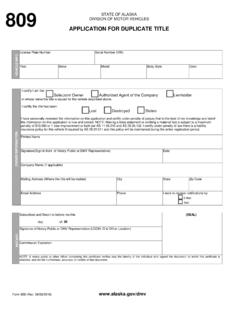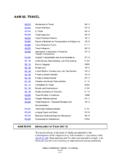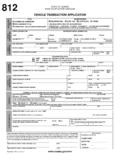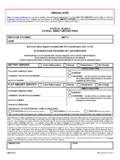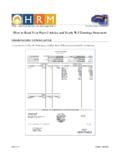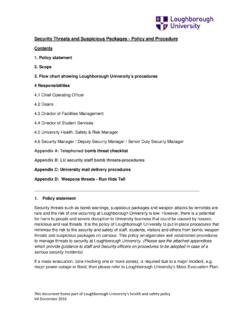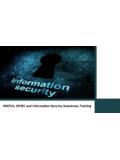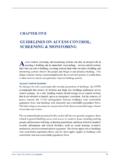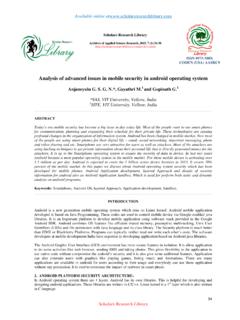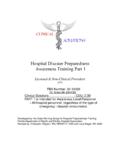Transcription of Handling and Processing Mail Safely - Alaska
1 Handling and Processing mail Safely Screen all mail and packages for suspicious items when they first arrive at your mailroom for sorting. Staff who sort mail by hand should perform the screening, as they are the ones most likely to notice a suspicious item. Unfortunately, screening procedures for incoming mail and packages are not foolproof. The person who first detects a suspicious letter or package is often not the intended recipient. Prominently display a list of suspicious letter and package indicators in your mailroom and provide a copy of the list to all staff to ensure they re familiar with it. The Postal Inspection Service s Poster 84, suspicious mail or packages , illustrates key characteristics of a suspicious or potentially dangerous mail item.
2 Establish a letter and package bomb-screening program Evaluate your organization to determine if your business or an employee is a potential target. Appoint a mail center security coordinator and an alternate to be responsible for your screening plan and to ensure compliance. Establish lines of communication between the mail center security coordinator, management, and the security office. Develop screening procedures for all incoming letter and package deliveries. Train employees in the procedures. Develop Handling procedures for items identified as suspicious and dangerous. Develop procedures for confirming the contents of suspicious letters and packages identified through screening.
3 Establish procedures for isolating suspicious letters and packages . Train mail center, security, and management staff to validate all phases of your letter and package bomb-screening program. What are the roles and responsibilities of the mail center security coordinator relative to letter and package bomb safety? Postal Inspectors recommend including the mail center manager, or a designee, as a member of the group that develops your Bomb Threat Response Plan. Corporate management should ensure the mail center security coordinator and alternate are mature, responsible, and emotionally stable. They should be trained in the Bomb Threat Response Plan. What about bomb threats received in writing?
4 Written threats provide physical evidence that must be protected from contamination. Written threats and any envelopes in which they are received should be placed under clear plastic covers. All circumstances of their receipt should be recorded. What about bomb threats received by phone? Phone threats offer an opportunity to obtain more detailed information, perhaps even the caller s identity. For that reason, your receptionist or others who take calls from the public should be trained to remain calm and to solicit as much information as possible. The bomber s intentions may be to damage property, not to injure or kill anyone. If so, the person receiving the call may be able to obtain useful information before the caller ends the conversation.
5 Keep the caller on the line, ask him or her to repeat the message several times, and gather more information, such as caller ID. Write down the threat verbatim, using the caller s own words, and record any other information. Don t hang up under any circumstances! Ask corporate and security management to decide on the proper response, such as evacuation. Notify police and the fire department immediately. Poster 84 [D] What should employees do if they receive an unexpected mailpiece? Because of the increased sophistication of letter or package bombs and placed devices, fewer bombs can be readily identified by examining the exterior of a mailpiece. Remind employees: If you re not expecting a letter or package, be suspicious .
6 If you receive an unexpected mailpiece: First check the return address. If you don t recognize the return address, contact the security office. The security office should attempt to contact the sender. Don t open the mailpiece until verification proves it s harmless. What should the mail center security coordinator do after encountering a suspicious letter or package during screening? Response Action First Follow your local established protocols. Inquire Ask the employee who found the suspicious letter or package to write down the specific recognition point in the screening process that caused the alert (excessive postage, no return address, rigid or bulky, lopsided or uneven appearance, strange odor, protruding wires, oily stains, discolorations, excessive tape, etc.)
7 Isolate Isolate the area where the mailpiece was found do not touch it. Alert Alert employees that a suspicious letter or package has been found, what the points of recognition are, and to remain clear of the isolation area. Notify Inform management and security that a suspicious item has been detected by the screening process. Document Without touching the mailpiece, record from each visible side of the item all available information (name and address of addressee and of sender, postmark, cancellation date, types of stamps, and any other markings or labels found on the item). Copy information with exact spelling and location given on item. Inform Inform police (and Postal Inspectors if sent through the mail ) of all information recorded from the suspect item.
8 What are some questions to ask the addressee or sender during the verification process? Is the addressee familiar with the name and address of the sender? Is the addressee expecting a letter or package from the sender? If so, what s the approximate size of the item? Ask the sender to fully explain the circumstances surrounding the sending of the item and describe the contents. At this point, management and security must decide whether or not to proceed to open the letter or package. If the sender is unknown, is the addressee expecting business correspondence from the city, state, or country of origin of the item? Is the addressee aware of any friends, relatives, or business acquaintances currently on vacation or on business trips in the area of the return address?
9 Has the addressee purchased or ordered any merchandise from a business whose parent organization might be located in the area of the return address? If you determine the sender is unknown at that return address or the return address is fictitious, consider this scenario as an indication the letter or package may be dangerous. What is the importance of testing contingency plans? The Postal Inspection Service can t overemphasize the need to test contingency plans with mock suspicious parcels placed in the mail center or elsewhere in the facility. The tests should be conducted in a manner that does not alarm employees. Dress rehearsals help ensure that your lines of communication function as planned and that each person who has a role to play knows his or her part.
10 Test the efficiency of your emergency contingency plan by conducting scheduled tests. Hold post-test meetings to address problems and resolve them before the next test. mail CENTER SECURITY QUICK REFERENCE GUIDE For suspicious letters and packages First, if there is a known medical emergency or chemical reaction with the mailpiece, call 911. If you are unable to verify mail contents with the addressee or sender: Do not open it. Treat it as suspect. Isolate it don t handle. Contact building security, if available. Call Postal Inspectors at 877-876-2455 (press 2) if the item was received in the mail . For a bomb Evacuate immediately. Call 911 for police, fire and hazmat unit.
